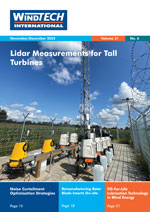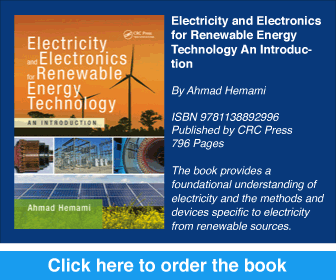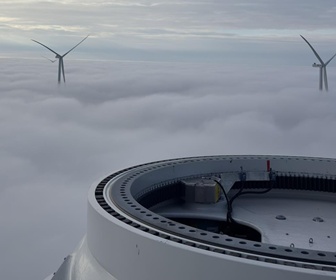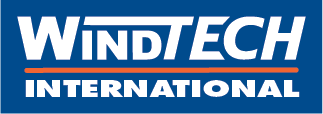- Category: Articles
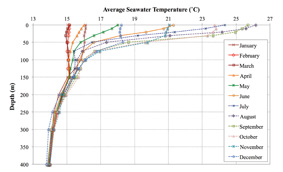 Offshore Wind Turbines to Provide Combined Electricity and Deep-Sea Thermal Energy
Offshore Wind Turbines to Provide Combined Electricity and Deep-Sea Thermal Energy
Research at the University of Malta is evaluating the possibility of using offshore wind turbines in deep waters to exploit wind energy at the same time as making use of the enormous renewable thermal energy resources available in deep-sea cold water. The concept is based on the direct coupling of offshore wind turbines to positive displacement pumps, replacing the gearbox and electrical generator found in conventional systems. Rather than producing electricity directly, individual wind turbines would pump pressurised deep sea water to a centralised hydroelectric power station. After producing electricity, the sea water is pumped through a heat exchanger to provide district cooling. The idea of using cold water below the thermocline layer and offshore wind energy to extract it has evolved into the Offshore Wind and Thermocline Energy Production (OWTEP) system.
By Mr Daniel Buhagiar and Prof. Ing. Tonio Sant, Department of Mechanical Engineering, University of Malta
- Category: Articles
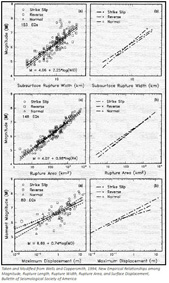 Taking a Closer Look at Faulting and Seismic Hazards for Wind Farms
Taking a Closer Look at Faulting and Seismic Hazards for Wind Farms
Across much of the world earthquake activity is a common occurrence. Although some places have more seismic activity than others, hazards from earthquakes may have a wider reaching long-term impact on wind farms than that expected by many in the design community. Even though a site may not have recent seismic activity, this does not preclude it from future seismic shaking or ground rupture. Within areas that have active seismic motion, seismic and fault hazard investigations are an important part of project development. For those not familiar with these types of investigations there are various review components which can be obscure without a guideline for interpretation. Even for technical specialists, variable code requirements and local geologic differences make individual project reviews difficult to achieve if someone is not familiar with a standard guidance document. The intent of this article is to discuss these considerations during wind farm seismic evaluations.
By Daniel E. Kramer, Petralogix Engineering, and Garret Hubbart, Neil O. Anderson & Associates, USA
- Category: Articles
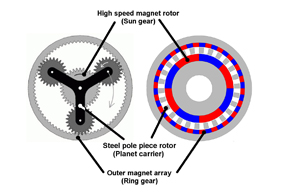 Developing and Testing Solutions for a Compact and Efficient Offshore Wind Turbine
Developing and Testing Solutions for a Compact and Efficient Offshore Wind Turbine
For weight, size and cost reasons it is common to employ a mechanical gearbox in a wind turbine generator; however, mechanical gearboxes have disadvantages including reliability, acoustic noise, mechanical vibration and maintenance requirements. A direct drive machine removes many issues, but the size, mass and cost of the turbine may be compromised. In this article the development and testing of a magnetically geared generator and a nacelle structure using a kingpin attachment are discussed. This combination seems to offer both efficiency and a low cost of energy as well as being much more lightweight than traditional solutions.
By Chris Kirby and Stuart Calverley, Magnomatics Limited, and Ewoud Stehouwer and Ben Hendriks,, DNV GL, UK
- Category: Articles
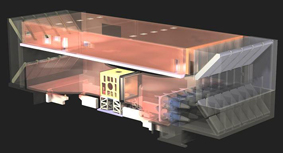 A Novel Perspective
A Novel Perspective
Offshore wind energy is playing an increasingly significant role in meeting worldwide energy demand. In these circumstances, the development of floating offshore wind turbines (FOWTs) represents a new challenge for both academia and industry. However, the potential for deep-water multi-megawatt installations and use of strong wind resources make these challenges attractive. In the last decade sophisticated numerical codes have been developed to compute the coupled aerodynamics and hydrodynamics of FOWTs. The complexity of such codes, as well as the limited availability of full-scale data, brings about the need for experimental campaigns and, more specifically, scale tests for validation. Recently tests of FOWTs were performed in various water basins. In this article a complementary approach to test scale models of FOWTs is presented: in particular, the design of a six degrees-of-freedom (DoF) robot, ‘HexaFloat’, capable of reproducing the floating motion of a scale FOWT for wind tunnel experiments.
By Ilmas Bayati and Marco Belloli, Politecnico di Milano, Dipartimento di Meccanica, Milan, Italy
- Category: Articles
When You Bought the Turbine, Did You Buy All the Ideas in It?
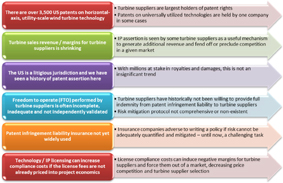 The current shift of wind turbine original equipment manufacturers (OEMs) into providing more services has been the result of a need to replenish the revenue drop-off from recent lagging turbine sales, as well as a desire to regulate the services being performed on their turbine fleets.
The current shift of wind turbine original equipment manufacturers (OEMs) into providing more services has been the result of a need to replenish the revenue drop-off from recent lagging turbine sales, as well as a desire to regulate the services being performed on their turbine fleets.
By Philip Totaro, CEO of IntelStor, USA
- Category: Articles
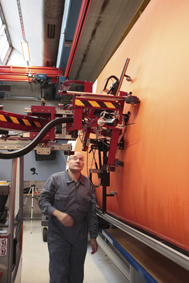 Automated Scanning for Quality Assurance
Automated Scanning for Quality Assurance
All manufacturers of rotor blades for contemporary wind turbines are concerned with the need for an efficient and safe quality assurance (QA) of blade integrity. The manufacture of blades is still a largely manual lay-up and assembly process, where variability in quality is a key issue for the ultimate blade performance.
By Morgan Troedsson, Product Manager, FORCE Technology, Denmark
- Category: Articles
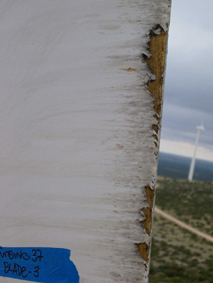 Designing for the Rough as well as the Smooth
Designing for the Rough as well as the Smooth
Optimal performance of wind turbine blades is critical to ensuring cost-effective power delivery. Aerodynamic behaviour plays a major role in overall efficiency, giving rise to highly refined blade section shapes designed to maximise energy capture. However, with increased performance comes increased sensitivity to changes in operating conditions. This article discusses studies of increasing surface roughness of turbine rotor blades over time and how the effects of the roughness can be modelled
By Chris Langel, Raymond Chow and C.P. van Dam, Department of Mechanical and Aerospace Engineering, University of California, Davis, USA



